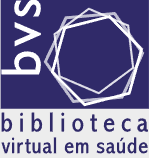Seroprevalence Of Chagas And Toxoplasmosis In Patients With Rheumatic Diseases. Preliminary report
Abstract
Introduction: The use of biological therapy has been associated with an increased risk for different types of infections. In this sense, the development of strategies for prevention and treatment of infections in patients with rheumatic diseases with biological therapy is essential. Currently there is little information on the seroprevalence of Chagas disease (CD) and toxoplasmosis in patients with rheumatic diseases.
Objective: To analyze the seroprevalence of CD and toxoplasmosis in patients with rheumatic diseases in plans to start BT.
Methodology: Retrospective study of patients with rheumatic diseases whit criteria to start a BT in the Rheumatology Service of the IPS Central Hospital. Clinical, epidemiological, serological and treatment-related variables were recorded. The frequency of positive serology for CD and toxoplasmosis was analyzed and the association with the collected variables was studied.
Results: 228 patients were included (RA = 176, Sp = 43, Collagenopathy = 9), 74.6% were women with a mean age of 46.2 years. Chagas seroprevalence was 2.9% and toxoplasmosis 63.1%. No significant associations were identified with the analyzed variables.
Conclusion: The seroprevalence of toxoplasmosis and Chagas disease was similar to that described in studies of the general population of our country and the region, so it is important to always keep them in mind especially in developing countries.1Q In the present study, a reactivation of the disease after the onset of BT was not found.
Downloads
References
(1) Salvador F, Sánchez-Montalvá A, Valerio L, Serre N, Roure S, Treviño B, et al. Immunosuppression and Chagas disease; experience from a non-endemic country. Clinical microbiology and infection : the official publication of the European Society of Clinical Microbiology and Infectious Diseases. 2015;21(9):854-60.
(2) Hosseininejad Z, Sharif M, Sarvi S, Amouei A, Hosseini SA, Nayeri Chegeni T, et al. Toxoplasmosis seroprevalence in rheumatoid arthritis patients: A systematic review and meta-analysis. 2018;12(6):e0006545.
(3) Pinazo M-J, Espinosa G, Cortes-Lletget C, Posada EdJ, Aldasoro E, Oliveira I, et al. Immunosuppression and Chagas Disease: A Management Challenge. PLoS neglected tropical diseases. 2013;7(1):e1965.
(4) Martinez-Perez A, Norman FF, Monge-Maillo B, Perez-Molina JA, Lopez-Velez R. An approach to the management of Trypanosoma cruzi infection (Chagas' disease) in immunocompromised patients. Expert review of anti-infective therapy. 2014;12(3):357-73.
(5) Arnett FC, Edworthy SM, Bloch DA, McShane DJ, Fries JF, Cooper NS, et al. The American Rheumatism Association 1987 revised criteria for the classification of rheumatoid arthritis. Arthritis Rheum. 1988;31(3):315-24.
(6) Aletaha D, Neogi T, Silman AJ, Funovits J, Felson DT, Bingham CO, 3rd, et al. 2010 Rheumatoid arthritis classification criteria: an American College of Rheumatology/European League Against Rheumatism collaborative initiative. Arthritis Rheum. 2010;62(9):2569-81.
(7) Rudwaleit M, van der Heijde D, Landewé R, Listing J, Akkoc N, Brandt J, et al. The development of Assessment of SpondyloArthritis international Society classification criteria for axial spondyloarthritis (part II): validation and final selection. Ann Rheum Dis. 2009;68(6):777-83.
(8) Rudwaleit M, van der Heijde D, Landewé R, Akkoc N, Brandt J, Chou CT, et al. The Assessment of SpondyloArthritis International Society classification criteria for peripheral spondyloarthritis and for spondyloarthritis in general. Ann Rheum Dis. 2011;70(1):25-31.
(9) Méndez CH, Méndez MC. Sociedad y estratificación: Método Graffar-Méndez Castellano. caracas, Venezuela. 1994.
(10) Prevoo ML, van 't Hof MA, Kuper HH, van Leeuwen MA, van de Putte LB, van Riel PL. Modified disease activity scores that include twenty-eight-joint counts. Development and validation in a prospective longitudinal study of patients with rheumatoid arthritis. Arthritis Rheum. 1995;38(1):44-8.
(11) Bombardier C, Gladman DD, Urowitz MB, Caron D, Chang CH. Derivation of the SLEDAI. A disease activity index for lupus patients. The Committee on Prognosis Studies in SLE. Arthritis Rheum. 1992;35(6):630-40.
(12) Garrett S, Jenkinson T, Kennedy LG, Whitelock H, Gaisford P, Calin A. A new approach to defining disease status in ankylosing spondylitis: the Bath Ankylosing Spondylitis Disease Activity Index. The Journal of rheumatology. 1994;21(12):2286-91.
(13) R Core Team. R: A language and environment for statistical computing. Vienna, Austria. Available from: http://www.R-project.org/.
(14) Meza Acosa G, Cerecetto Meyer H. Seroprevalencia de la enfermedad de Chagas en embarazadas del departamento de Cordillera en el período 2010-2016 y el comportamiento de la seroprevalencia después de 21 años de la implementación del Programa de Control Prenatal de Chagas. Mem Inst Investig Cienc Salud. 2019;17(3).
(15) San Miguel MC, Ferreira J, Figueredo N, Fleitas D, Canese A. Prevalencia de Toxoplasmosis y Chagas en pacientes con VIH/SIDA Rev Inst Med Trop. 2010;5(2).
(16) Chagas. Available from: https://www.mspbs.gov.py/senepa/chagas.html
(17) Wohlfert EA, Blader IJ, Wilson EH. Brains and Brawn: Toxoplasma Infections of the Central Nervous System and Skeletal Muscle. Trends in parasitology. 2017;33(7):519-31.
(18) Lewis JM, Clifford S, Nsutebu E. Toxoplasmosis in immunosuppressed patients. Rheumatology (Oxford, England). 2015;54(11):1939-40.
(19) Romero DA, González Vatteone V, de Guillen I, Aria L, Meza T, Rojas A, et al. Seroprevalencia y factores de riesgo asociados a la toxoplasmosis en mujeres en edad reproductiva que acudieron al Hospital Distrital de Lambaré, Paraguay. Mem Inst Investig Cienc Salud. 2017;15(3):83-8.
(20) Tian AL, Gu YL, Zhou N, Cong W, Li GX, Elsheikha HM, et al. Seroprevalence of Toxoplasma gondii infection in arthritis patients in eastern China. 2017;6(1):153.
(21) El-Henawy AA, Hafez EAR, Nabih N, Shalaby NM, Mashaly M. Anti-Toxoplasma antibodies in Egyptian rheumatoid arthritis patients. Rheumatology international. 2017;37(5):785-90.
(22) Hosseininejad Z, Sharif M, Sarvi S, Amouei A, Hosseini SA, Nayeri Chegeni T, et al. Toxoplasmosis seroprevalence in rheumatoid arthritis patients: A systematic review and meta-analysis. PLoS neglected tropical diseases. 2018;12(6):e0006545-e.
(23) Fischer S, Agmon-Levin N, Shapira Y, Porat Katz B-S, Graell E, Cervera R, et al. Toxoplasma gondii: bystander or cofactor in rheumatoid arthritis. Immunologic Research. 2013;56(2):287-92.
(24) González-Ramos J, Alonso-Pacheco M, Mora-Rillo M, Herranz-Pinto P. Need to screen for Chagas disease andStrongyloides infestation in non-endemiccountries prior to treatment with biologics. Actas Dermosifiliogr. 2018;2017.
(25) El-Sayed NM, Ismail KA, Badawy AF, Elhasanein KF. In vivo effect of anti-TNF agent (etanercept) in reactivation of latent toxoplasmosis. Journal of parasitic diseases : official organ of the Indian Society for Parasitology. 2016;40(4):1459-65.
(26) Nardone R, Zuccoli G, Brigo F, Trinka E, Golaszewski S. Cerebral toxoplasmosis following adalimumab treatment in rheumatoid arthritis. Rheumatology (Oxford, England). 2014;53(2):284.
(27) Gonzalez-Vicent M, Diaz MA, Sevilla J, Madero L. Cerebral toxoplasmosis following etanercept treatment for idiophatic pneumonia syndrome after autologous peripheral blood progenitor cell transplantation (PBPCT). Annals of hematology. 2003;82(10):649-53.
(28) Navarrete-Dechent C, Majerson D, Torres M, Armijo D, Patel M, Menter A, et al. Use of tumor necrosis factor alpha (TNF α) antagonists in a patient with psoriasis and Chagas disease. An Bras Dermatol. 2015;90(3 Suppl 1):171-4.
(29) Lassoued S, Zabraniecki L, Marin F, Billey T. Toxoplasmic chorioretinitis and antitumor necrosis factor treatment in rheumatoid arthritis. Semin Arthritis Rheum. 2007;36(4):262-3.
Copyright (c) 2020 Paraguayan Journal of Rheumatology

This work is licensed under a Creative Commons Attribution 4.0 International License.









